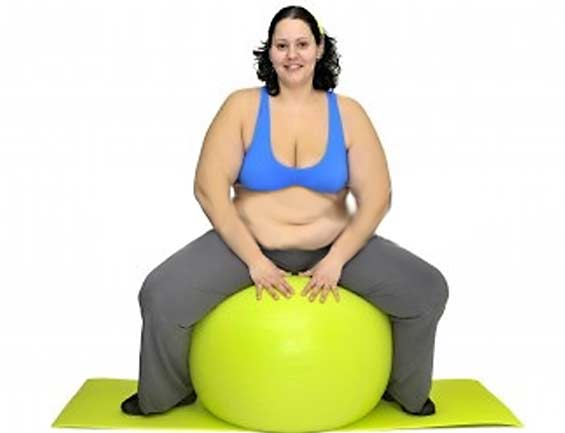“A healthful diet that tastes good and is culturally appropriate, combined with physical activity, and is the best advice for those wishing to reduce the risk of obesity and the related risk factors”.
Obesity is the biggest challenge among the epidemics facing the world because it is on the rise in both developing and developed countries. The prevalent rates of obesity have increased dramatically in the last decade and are expected to double in the next 25 years. Almost in epidemic proportions now,
Obesity is the starting point of a lot of disease like diabetes, heart disease, hypertension, and even some forms of cancer. It is the plague of today’s society.
What is Obesity?
Obesity is a condition of excess body fat. It may be defined as being more than 20% above the normal ideal weight for one’s sex, age and weight. To say that merely consuming too many calories causes obesity is like saying that the only cause of the American Revolution was the Boston Tea Party.
It is important to note that no “diet or weight loss formula” works independently of an eating plan based on the Dietary Guidelines given by the mainstream nutrition and health institutes. So if you are obese throw away all those “special formulas”, supplements, and pills, stop eating more calories than you need and all that is become more physically active and adopt a healthy eating plan.
Obesity is the net result of an excess of energy consumption over expenditure. Factors that must be considered as contributing to causation are: heredity, overeating, altered metabolism of adipose tissue, defective or decreased thermogenesis (the process by which calories are converted to heat), decreased physical activity without an appropriate reduction in food intake, and certain prescribed medications.
Overeating is clearly a prominent contributor to obesity. It is a very complex problem with one solution which can be adopted, is by making physical activity a part of your daily life, is an important way to help control your weight and lowers your risk for health problems.
To loose weight, one must decrease caloric intake, increase caloric expenditure, or do both. Thus, the chief approaches to weight reduction involve behaviour change related to diet and exercise. Weight loss reduces health risks in the obese. Because obesity is a condition requiring continuous attention, any behaviour changes required to maintain weight loss must be life long.
Benefits of physical activity:
Physical activity contributes to weight loss, especially when it is combined with calorie reduction. Regular physical activity is extremely helpful for the prevention of overweight and obesity.
Being physically active can provide these benefits:
- Reduces your risk of dying from heart disease or stroke
- Lowers high blood pressure
- Helps keep your bones, muscles, and joints healthy
- Reduces anxiety and depression and improves your mood
- Helps you handle stress
- Helps control your weight
- Protects against falling and bone fractures in older adults
- May help protect against breast cancer
- Helps control joint swelling and pain from arthritis
- Gives you more energy
- Helps you sleep better
- Helps you look better
Regular physical activity, fitness and exercise are critically important for the health and well being of people of all ages. Spend less time in activities that use little energy like watching television and playing video games and more time in physical activities. Being physically active does not obligate in spending hours at the gym. It can also be spent with the activities that one enjoys like: pushing a stroller, gardening, stair climbing, walking, dancing and bicycling to name a few.
Create opportunities for activity, such as parking your car farther away, taking the stairs instead of the elevator, or walking down the hall to talk to a coworker instead of using e-mail. Don’t let the cold weather keep you on the couch! You can still find activities to do in the winter like exercising to a workout video or joining a sports league. Or get a head start on your spring-cleaning by choosing active indoor chores like window washing or reorganizing closets.
How should Exercise be initiated?
Usually physical activity should be initiated slowly, and the intensity should be increased gradually (e.g., start with a 10-minute walk three times a week and work your way up to 30 minutes of brisk walking or other form of moderate activity five times a week). Activities can be split into several short periods (e.g., 10 minutes 3 times a day) instead of one longer period (e.g., 30 minutes once a day).
The other important risk factor for obesity apart from the lack of physical activity is in balancing energy intake and energy expenditure.
To maintain your weight, your intake of calories must equal your energy output. Similarly to lose weight, you must use more energy than you take in. Severe calorie restrictions alone don’t usually work in controlling body weight in the long term. It can be possible only by getting more active which will help to burn up extra calories and also helps reduce abdominal obesity. So proper diet and physical activity will help one to attain a healthy and a happy life.
Therefore one should select activities that they ENJOY and that should fit into daily life. It may take time to incorporate more activity into your daily life. Don’t get discouraged if at first you miss a day or two; just keep trying and do your best to make it a regular part of your life. Then, one will soon realize how good it feels to be physically active and fit.
Ask for support from friends and family; likewise, support the people in your life who are trying to be physically active. Many forms of physical activity can be social, allowing you to converse and spend time with family or friends or to develop new relationships. Make fitness a priority…COMMITS TO IT.




